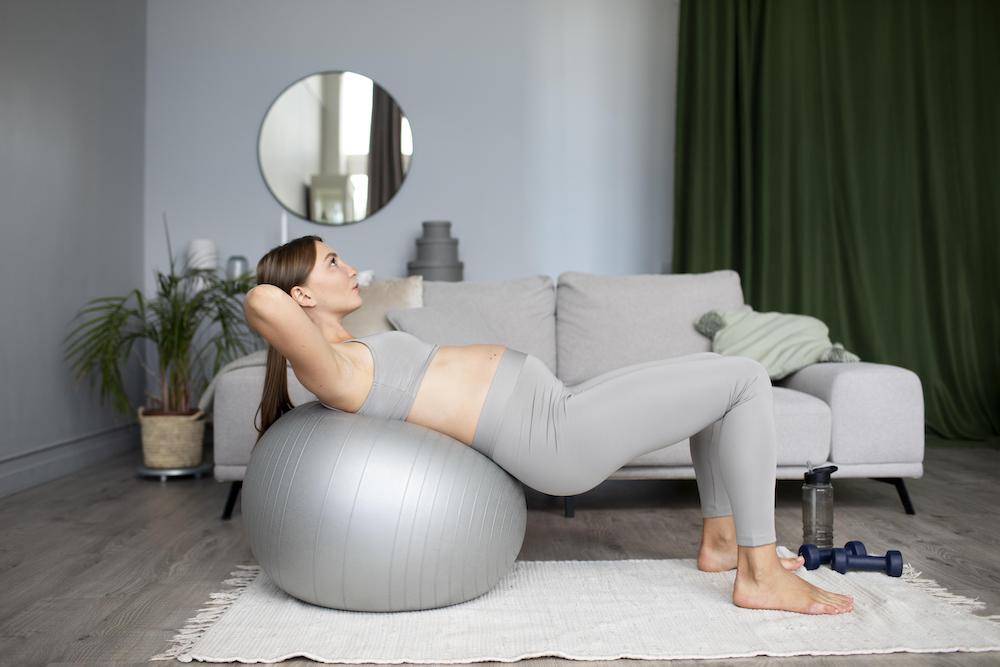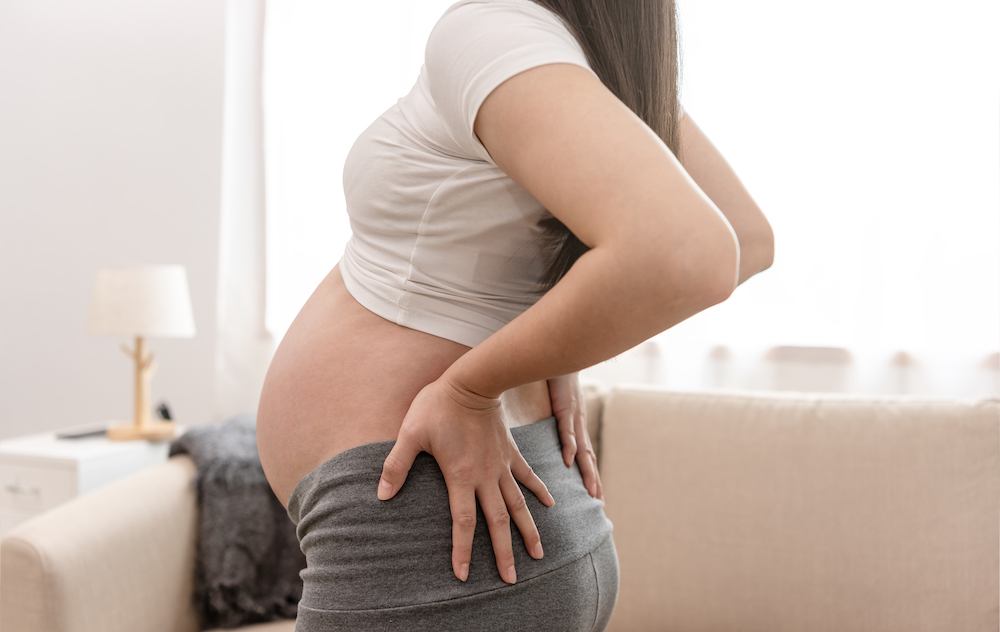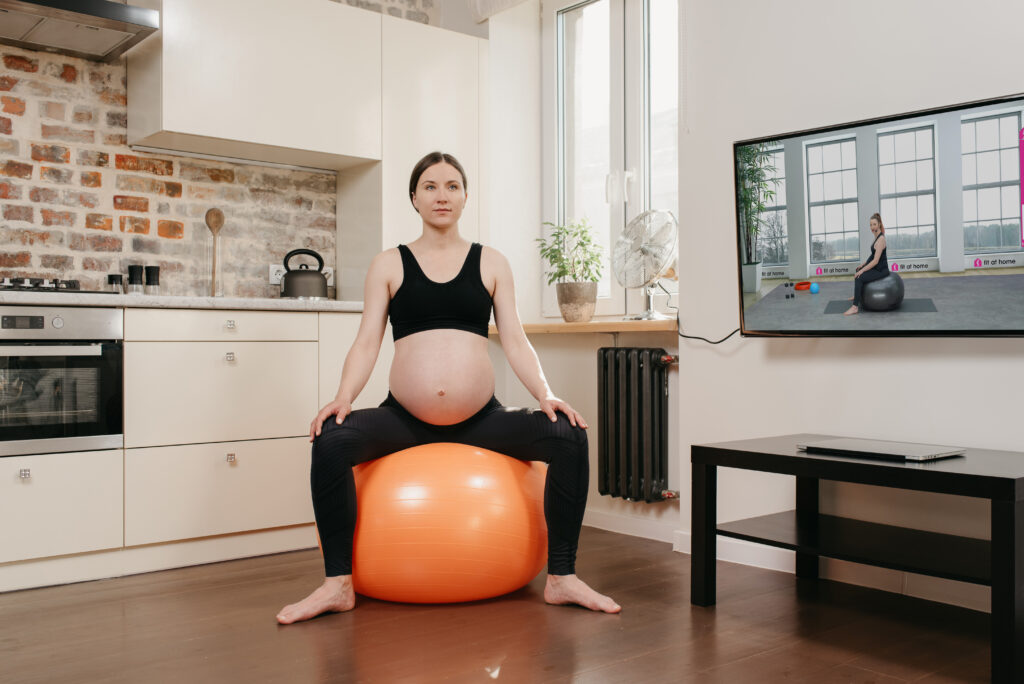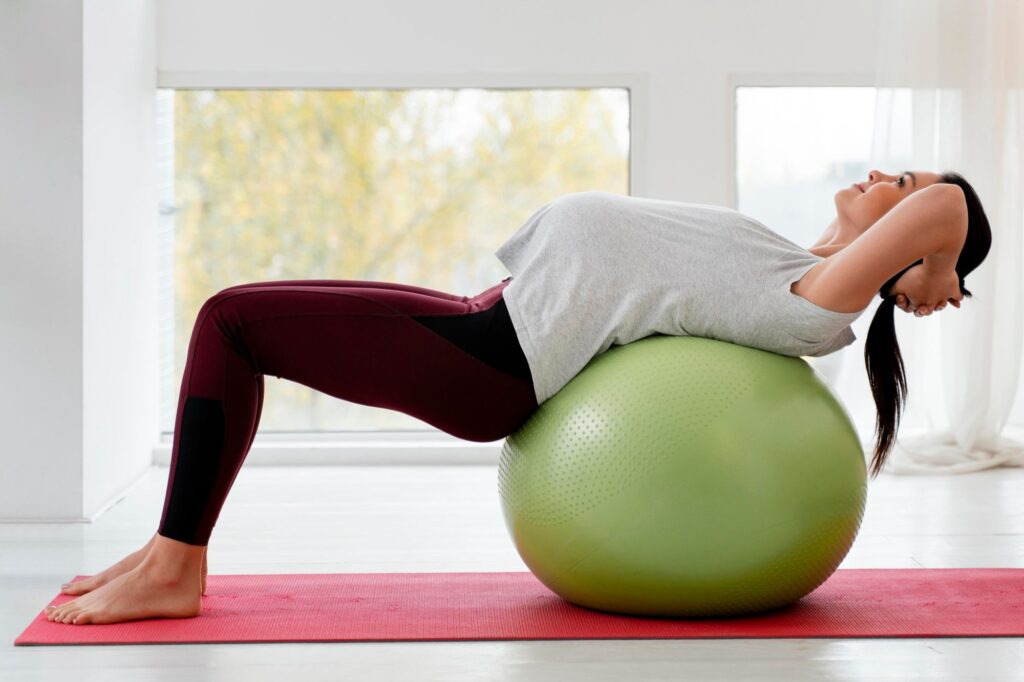Pregnancy is a beautiful journey that brings significant changes to a woman’s body. Staying active during this period is crucial for both physical and mental well-being. One versatile and safe tool for prenatal exercise is the gym ball, also known as a birthing ball or stability ball. We’ll explore the numerous benefits of incorporating a gym ball into your pregnancy workout routine and share some safe and effective exercises to keep you strong and comfortable throughout this transformative time.

Improved posture and core strength
Using a gym ball during pregnancy can help improve posture and strengthen core muscles. As the baby bump grows, many expectant mothers experience changes in their center of gravity, leading to poor posture. Sitting on a gym ball engages the core muscles and encourages proper spinal alignment, reducing the strain on the lower back.
Additionally, the gentle, controlled movements on the gym ball activate deep stabilizing muscles, contributing to a more stable and supportive core. This not only helps during pregnancy but also lays the foundation for a quicker postpartum recovery.
Alleviation of back pain
Back pain is a common complaint during pregnancy due to the increased weight and the body’s adjustment to the growing uterus. The gentle movements on a gym ball can provide relief by promoting flexibility and easing tension in the back muscles. Consider incorporating pelvic tilts and gentle stretches to target specific areas of discomfort.
Moreover, the gym ball allows for a range of motion that can be adjusted based on individual comfort levels. This adaptability makes it an excellent tool for addressing varying degrees of back pain experienced by pregnant women.

Enhanced pelvic floor function
Maintaining pelvic floor health is crucial for pregnant women. The gym ball can be utilized to perform controlled exercises that engage and strengthen the pelvic floor muscles. These exercises contribute to better bladder control, reduced risk of incontinence, and improved support for the growing uterus.
Pelvic floor exercises on the gym ball, such as Kegels and hip circles, promote blood circulation in the pelvic region, supporting the health of the pelvic floor. This can be particularly beneficial in preventing or alleviating common issues like pelvic pain and discomfort.
Transform your TV into your personal gym!

Encourages optimal fetal positioning
Regular use of a gym ball can help encourage optimal fetal positioning, potentially reducing the chances of a breech birth. Gentle bouncing and swaying motions on the ball can create a dynamic environment for the baby, aiding in their movement into the head-down position. Additionally, the gym ball can be incorporated into exercises that involve gentle rocking and rotation, promoting flexibility in the hips and encouraging the baby to find a comfortable and favorable position for birth.
Pregnant & Fit
Stay fit during your pregnancy with the Pregnant & Fit workouts! Work out safely with our professional trainer whenever it suits you. Abby will help you stay fit and flexible with her special pregnancy pilates. In addition to the Pregnant & Fit workouts, Fit at Home offers more than 1,000 workouts, including workouts like Kids & fun, Meditation & Fit, Dumbbell & Fit, and many more.

Versatile exercise options
The gym ball offers a wide range of exercise possibilities suitable for pregnant women. From modified squats and gentle stretches to pelvic circles and seated exercises, the versatility of the gym ball allows for a customized workout that adapts to the changing needs and comfort levels of each trimester. For example, incorporating gentle bouncing or rocking on the gym ball can elevate the heart rate slightly, providing a low-impact cardiovascular workout that supports overall fitness during pregnancy.
Labor preparation
Gym balls are widely used during labor to facilitate movement and provide comfort. Practicing various positions on the ball during pregnancy helps familiarize expectant mothers with these beneficial postures. This familiarity can contribute to a smoother labor experience and may even help progress labor in some cases.

It’s essential to practice a variety of positions, such as sitting, leaning, and swaying, on the gym ball to discover what feels most comfortable. This preparation can enhance a woman’s sense of control and confidence during labor.
Exercises with a gym ball during pregnancy
Using a gym ball during pregnancy can be a safe and effective way to stay active and promote overall health. Here are some exercises you can try with a gym ball during pregnancy:
- Pelvic tilts: Sit on the gym ball with your feet flat on the floor, hip-width apart. Slowly rock your pelvis forward and backward, focusing on engaging your core muscles. This exercise can help relieve lower back pain and strengthen your pelvic floor muscles.
- Seated marches: Sit on the gym ball and gently bounce up and down while lifting one foot off the ground at a time in a marching motion. This exercise can help improve circulation and strengthen your leg muscles.
- Wall squats: Stand with your back against a wall and place the gym ball between your lower back and the wall. Slowly lower yourself into a squat position, keeping your knees behind your toes and your back supported by the gym ball. Hold for a few seconds before returning to the starting position. This exercise helps strengthen your legs and glutes while maintaining proper alignment.
- Cat-cow stretch: Kneel on the floor with your hands on the gym ball in front of you. Inhale as you arch your back and lift your head and tailbone towards the ceiling (cow position). Exhale as you round your spine, tucking your chin towards your chest (cat position). Repeat this fluid motion, focusing on stretching and mobilizing your spine.
- Hip circles: Sit on the gym ball with your feet flat on the floor, hip-width apart. Slowly rotate your hips in a circular motion, first clockwise and then counterclockwise. This exercise helps improve hip mobility and can alleviate discomfort associated with pregnancy.
- Arm circles: Sit or stand with your feet shoulder-width apart and hold the gym ball in front of you with both hands. Extend your arms straight out and make small circles with the gym ball in one direction, then reverse the direction. This exercise helps strengthen your shoulders and arms.
- Kegel exercises: Sit on the gym ball with your feet flat on the floor and your knees bent at a 90-degree angle. Place your hands on your hips and engage your pelvic floor muscles by imagining you’re stopping the flow of urine. Hold for a few seconds, then release. Repeat this exercise several times to strengthen your pelvic floor muscles, which can help prevent urinary incontinence during pregnancy and aid in postpartum recovery.
Remember to listen to your body and modify or stop any exercise that causes discomfort or pain. Stay hydrated, avoid overheating, and don’t push yourself too hard. If you experience any unusual symptoms or have concerns about exercising during pregnancy, consult your healthcare provider for guidance.